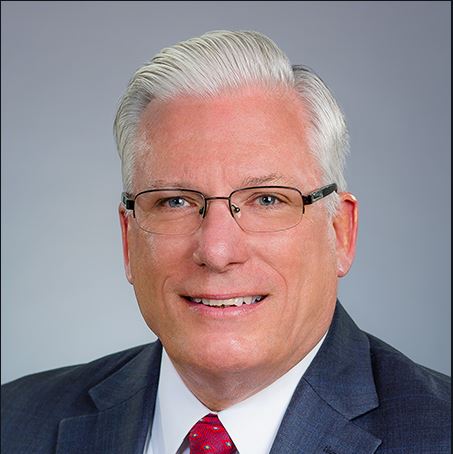How satellite communications create a critical connectivity link for first responders
During the 2019 California wildland fires, at least 874 cellphone towers were unavailable because of power outages or tech issues and damage from fire and wind. Up to 57% of cell sites in impacted areas were not working. The situation created what the director of the state’s Office of Emergency Services, described as a “worst-case scenario” for emergency responders, with “911 centers and hospital centers [unable] to process critical data or leverage important records.”
This is hardly an isolated incident for the state. In October 2017, wildland fires in Northern California damaged or destroyed 340 cell sites. Then, in November 2018, the devastating Camp Fire–blazing through 240 square miles in the same region—destroyed 17 cell towers in its first day, with 66 towers damaged or out of service during the first two weeks of the disaster.
The wealth of wildland fire-triggered cell-site failures and rolling power outages illustrates how any disruption to emergency communications is a critical public-safety threat.
When heading to fires—as well as any natural or human-caused disaster—first responders need reliable, consistent communications capabilities to assist victims, support operations and keep themselves and others safe. While they have typically relied on terrestrial networks, such as land mobile radios (LMR) and cellular long-term evolution (LTE) services, disasters often impact these terrestrial networks.
Yet, critical communications must continue. Telecom carriers have taken significant steps to improve LTE network reliability, but public safety can get even more resilience in their networks by adding seamless satellite capabilities to LMR and LTE.
Terrestrial networks do not cover entire geographies, particularly in rural areas, and are limited to the LMR- or cellular-network footprint. For first responders, LMR and LTE smartphones are communications lifelines that must continue to operate, regardless of disasters, extended cell site outages and coverage limitations. When no connectivity exists, first responders and the communities they protect are put at risk.
To achieve unparalleled, resilient connectivity 24/7/365, responders must have access to a robust, local area network—separate from LMR and LTE—that complements and extends traditional terrestrial-based systems to ensure uninterrupted service and seamless switching whenever LMR/LTE coverage is unavailable.
This is where satellite communications (SATCOM) enters the equation as a proven, readily available option. An interoperable vehicular network system (VNS) with satellite-enabled push-to-talk (PTT) is the solution. It combines LMR/LTE connectivity with a seamless and complementary path that allows SATCOM to supplement terrestrial cellular when such coverage is unavailable or inadequate for the needs of public safety.
Through VNS, upfitters install on vehicles in just hours a solution with both cellular (LTE) and SATCOM for high availability and resiliency, as cell service automatically fails over to SATCOM when terrestrial is not available. This brings seamless roaming across networks and unparalleled coverage and capability. Vehicles currently equipped with LMR only can be readily upgraded to support the rich media environment of LTE, as well as SATCOM.
VNS can connect to public-safety networks and commercial networks. It supports high-bandwidth mobile services, with seamless switching between LTE and SATCOM and featuring multi-network resilience. Its LTE component provides broadband data and a wireless access point with fast speeds and low latency.
With beyond line-of-sight (BLOS) SATCOM for failover when LMR/LTE networks are not available, VNS delivers service without geographic or terrestrial boundaries or the vulnerabilities of traditional terrestrial networks. It ensures secure, reliable wireless connectivity for all law enforcement, fire and emergency medical service (EMS) vehicles—even during natural and human-caused disaster—with a multi-bearer approach that crews need to carry out life-saving missions.
VNS Brings Always-On, Always-Available Connectivity for Voice and Data
As part of the VNS system, satellite PTT effectively evolves legacy LMR PTT capabilities to hybrid data networks. It complements LMR and LTE with a highly reliable broadband satellite system, delivering coverage extension and assured network access when traditional networks are down or non-existent.
With no user intervention required, the system automatically and seamlessly routes voice and data traffic via the least expensive and most reliable network available, whether LMR, LTE or satellite. As a result, these traditional networks are transformed into a managed Wide Area Network (WAN) extending PTT and data connectivity globally. SATCOM failover allows uninterrupted service and seamless switching with quality-of-service (QoS) and preemption.
This integrated communications platform emerges as a hotspot for personal LMR radios and smartphones, body camera and other devices.
Its easy-to-use web portal enables network administrators to create call groups, assign user access, track locations and remotely manage vehicles. They can also readily add and manage users, Global Positioning System (GPS) locations, call logs and statistics.
As an all-IP system, these features are readily integrated with computer-aided dispatch, providing access to records-management systems and automatic vehicle location awareness. VNS can be deployed across any fleet of vehicles quickly and easily, providing an always-on/always-available connection and secure voice and data using encryption across joint operations involving LMR, LTE and SATCOM.
Public-safety responses often include air and marine operations. The VNS solution can be integrated into aircraft, helicopters and marine vessels, as necessary, to coordinate situational awareness and response, and it can be included in call groups where land, maritime and aeronautical coordination is critical to saving lives.
Communications during daily public-safety operations are challenging. Communications during disasters are critical.
When attempting to contain a catastrophic event, first responders face numerous operational challenges. Whether trying to gather situational awareness, plan containment and develop mitigation strategies, engage in search and rescue, or comforting victims who need them most, it is critical that responders stay firmly focused without communications barriers keeping them from performing all necessary and often life-saving duties.
Fortunately, with satellite-enabled VNS readily available today, they can successfully pursue their mission, with critical connectivity never in doubt.
Britt Lewis is Senior Vice President, Direct Sales and Business Development at Inmarsat Government.


















